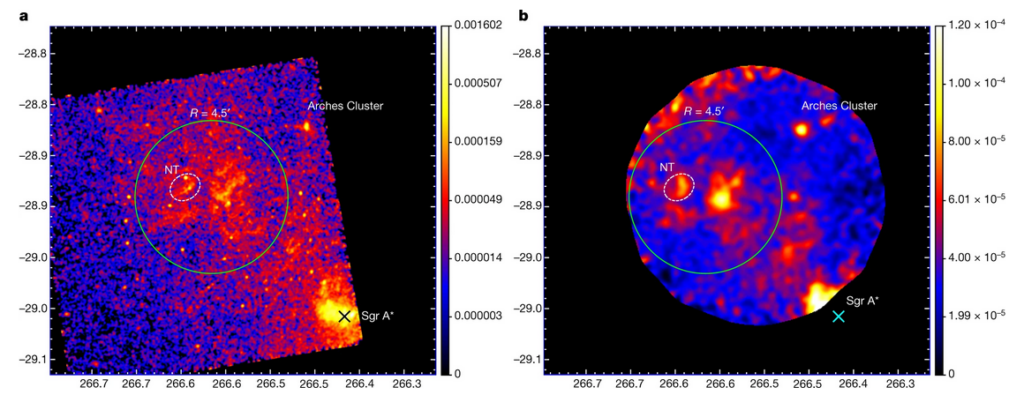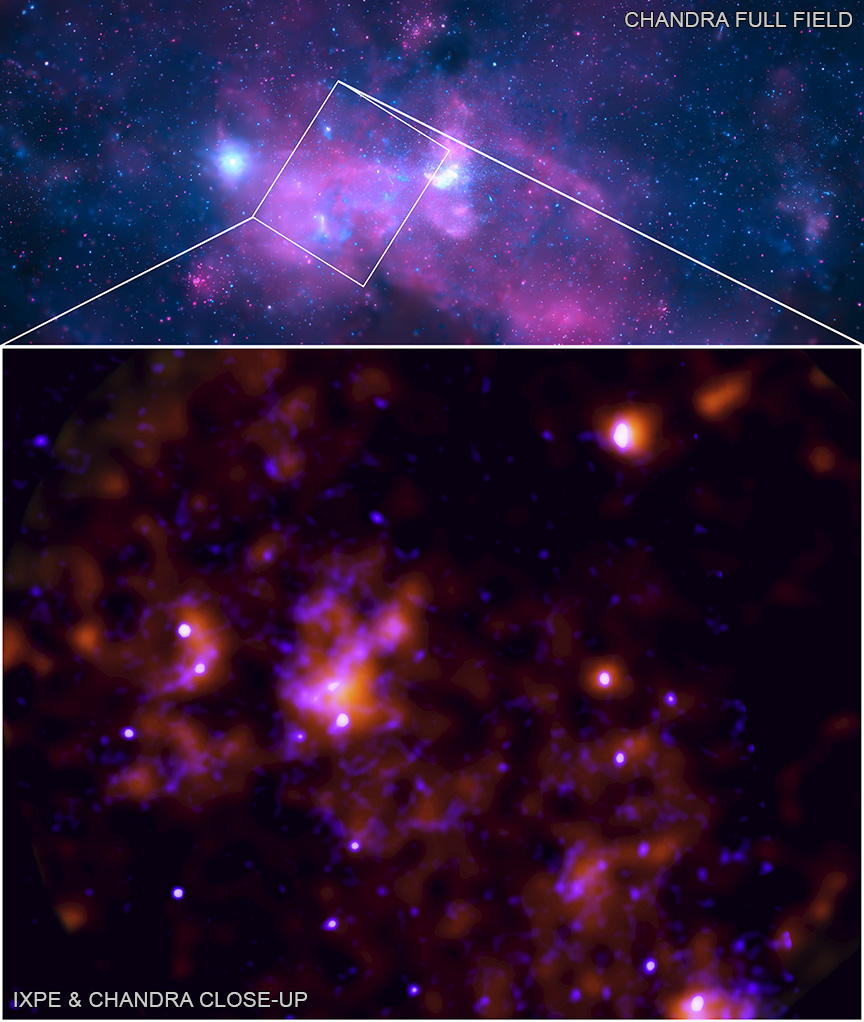The centre of the Milky Way Galaxy hosts a black hole (Sagittarius A* (Sgr A)) of about 4 million the mass of the Sun. Because of its mass, our own galaxy is considered as very “calm” at present, compared to those with active galactic nuclei.
This kind of galaxies that host a super massive black hole (SMBH) in their center and having masses between millions to 10 billions times the mass of the Sun are called active galaxies and these phenomena are also well-known as Active Galactic Nuclei (AGN). When matter from the galaxies starts to fall into the SMBH in the center of the galaxy, an enormous amount of energy is released across the electromagnetic spectrum (from radio emission up to X- and γ-rays). Our Milky Way galaxy has one of these supermassive black holes at its center, but our galaxy is not an active one. Active galaxies require that gas and dust are in the act of falling into the black hole and glowing brightly on the way in. The Milky Way isn’t currently doing this and when material isn’t falling into the black hole, it simply sits.

However, with the capabilities of the IXPE telescope we are able to search for the past activity of Sgr A*. Indeed, there are hints now studying the data from the IXPE polarimetry that Sgr A* was (almost) a quasar (a million times brighter than today) for just a short period about 200 years ago after devouring gas and dust within its reach..
The IXPE data was obtained in February and March 2022 and shows X-ray emission from clouds of gas (called “molecular clouds”) near Sgr A*. A team of scientists used the IXPE data to conclude that these molecular clouds, which are usually cold and dark, were bright in X-rays because they were reflecting X-rays generated elsewhere in the past — a phenomenon known as a “light echo”.
By combining the IXPE data with data from Chandra and XMM, the researchers were able to isolate the reflected X-ray signal and track down its source. They determined that the light originated from or near Sgr A* during an outburst approximately 200 years ago. If the outburst came from Sgr A* it may have been caused by the black hole abruptly consuming material from the molecular clouds.
The Nature article X-ray polarization evidence for a 200-year-old flare of Sgr A* presents the missing piece of evidence that X-rays from the giant molecular clouds are due to reflection of an intense, yet short-lived flare produced at or nearby Sgr A*.

Source: Nature, Harvard University, Chandra
